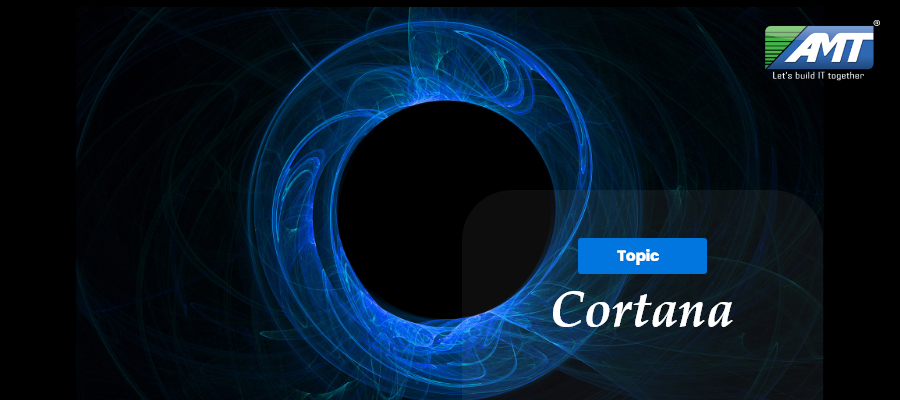Cortana is a virtual assistant created by Microsoft for Windows 10, Windows 10 Mobile, Windows Phone 8.1, Invoke smart speaker, Microsoft Band, Surface Headphones, Xbox One, iOS, Android, Windows Mixed Reality, and Amazon Alexa.
Cortana can set reminders, recognize natural voices without the requirement for keyboard input, and answer questions using information and web results from the Bing search engine.
Cortana is currently available in English, Portuguese, French, German, Italian, Spanish, Chinese, and Japanese language editions, depending on the software platform and region in which it is used.
Microsoft removed Cortana from Android and iOS on January 31, 2020. Not all markets will be affected by this change. The company has announced that Cortana services in the Microsoft Launcher on Android will be turned off by the end of April 2020.
Development:
The development of Cortana started in 2009 in the Microsoft Speech products team with general manager Zig Serafin and Chief Scientist Larry Heck. Heck and Serafin established the vision, mission, and long-range plan for Microsoft’s digital personal assistant and they built a team with the expertise to create the initial prototypes for Cortana. Some of the key researchers in these early efforts included Microsoft Research researchers Dilek Hakkani-Tür, Gokhan Tur, Andreas Stolcke, and Malcolm Slaney, research software developer Madhu Chinthakunta, and user experience designer Lisa Stifelman. To develop the Cortana digital assistant, the team interviewed human personal assistants. These interviews inspired a number of unique features in Cortana, including the assistant’s “notebook” feature. Originally Cortana was only meant to be a codename, but a petition on Windows Phone’s UserVoice site that proved to be popular made the codename official.
Expansion to other platforms:
In January 2015, Microsoft announced the availability of Cortana for Windows 10 desktops and mobile devices as part of merging Windows Phone into the operating system at large.
On May 26, 2015, Microsoft announced that Cortana would also be available on other mobile platforms. An Android release was set for July 2015, but an Android APK file containing Cortana was leaked ahead of its release. It was officially released, along with an iOS version, in December 2015.
During E3 2015, Microsoft announced that Cortana would come to the Xbox One as part of a universally designed Windows 10 update for the console.
By the numbers:
Number of people with access to Cortana: 800 million in 2019. Number of questions asked: 18 billion since launch.
Functionality:
Cortana can set reminders, recognize natural voice without the requirement for keyboard input, and answer questions using information from the Bing search engine (e.g., current weather and traffic conditions, sports scores, biographies). Searches using Windows 10 are only made with Microsoft Bing search engine and all links will open with Microsoft Edge, except when a screen reader such as Narrator is being used, where the links will open in Internet Explorer. Windows Phone 8.1’s universal Bing SmartSearch features are incorporated into Cortana, which replaces the previous Bing Search app which was activated when a user presses the “Search” button on their device. Cortana includes a music recognition service. Cortana can simulate rolling dice and flipping a coin. ‘Cortana’s “Concert Watch” monitors Bing searches to determine which bands or musicians the user is interested in. It integrates with the Microsoft Band watch band for Windows Phone devices if connected via Bluetooth, it can make reminders and phone notifications.
Since the Lumia Denim mobile phone series, launched in October 2014, active listening was added to Cortana, enabling it to be invoked with the phrase: “Hey Cortana”; it can then be controlled as usual. Some devices from the United Kingdom by O2 have received the Lumia Denim update without the feature but this was later clarified as a bug and Microsoft has since fixed it.[51]
Cortana integrates with services such as Foursquare to provide restaurant and local attraction recommendations and LIFX to control smart light bulbs.
Notebook:
Cortana stores personal information such as interests, location data, reminders, and contacts in the “Notebook”. It can draw upon and add to this data to learn a user’s specific patterns and behaviors. Users can view and specify what information is collected to allow some control over privacy, said to be “a level of control that goes beyond comparable assistants”. Users can delete information from the “Notebook”.
Reminders:
Cortana has a built-in system of reminders which for example can be associated with a specific contact; it will then remind the user when in communication with that contact, possibly at a specific time or when the phone is in a specific location. Originally these reminders were specific to the device Cortana was installed on, but since then Windows 10 Microsoft synchronizes reminders across devices.
Design:
Most versions of Cortana take the form of two nested, animated circles which are animated to indicate activities such as searching or talking. The main color scheme includes a black or white background and shades of blue for the respective circles.
Phone notification syncing:
Cortana on Windows mobile and Android is capable of capturing device notifications and sending them to a Windows 10 device. This allows a computer user to view notifications from their phone in the Windows 10 Action Center. The feature was announced in early 2016 and released later in the year.
The above is a brief about Cortana. Watch this space for more updates on the latest trends in Technology.
